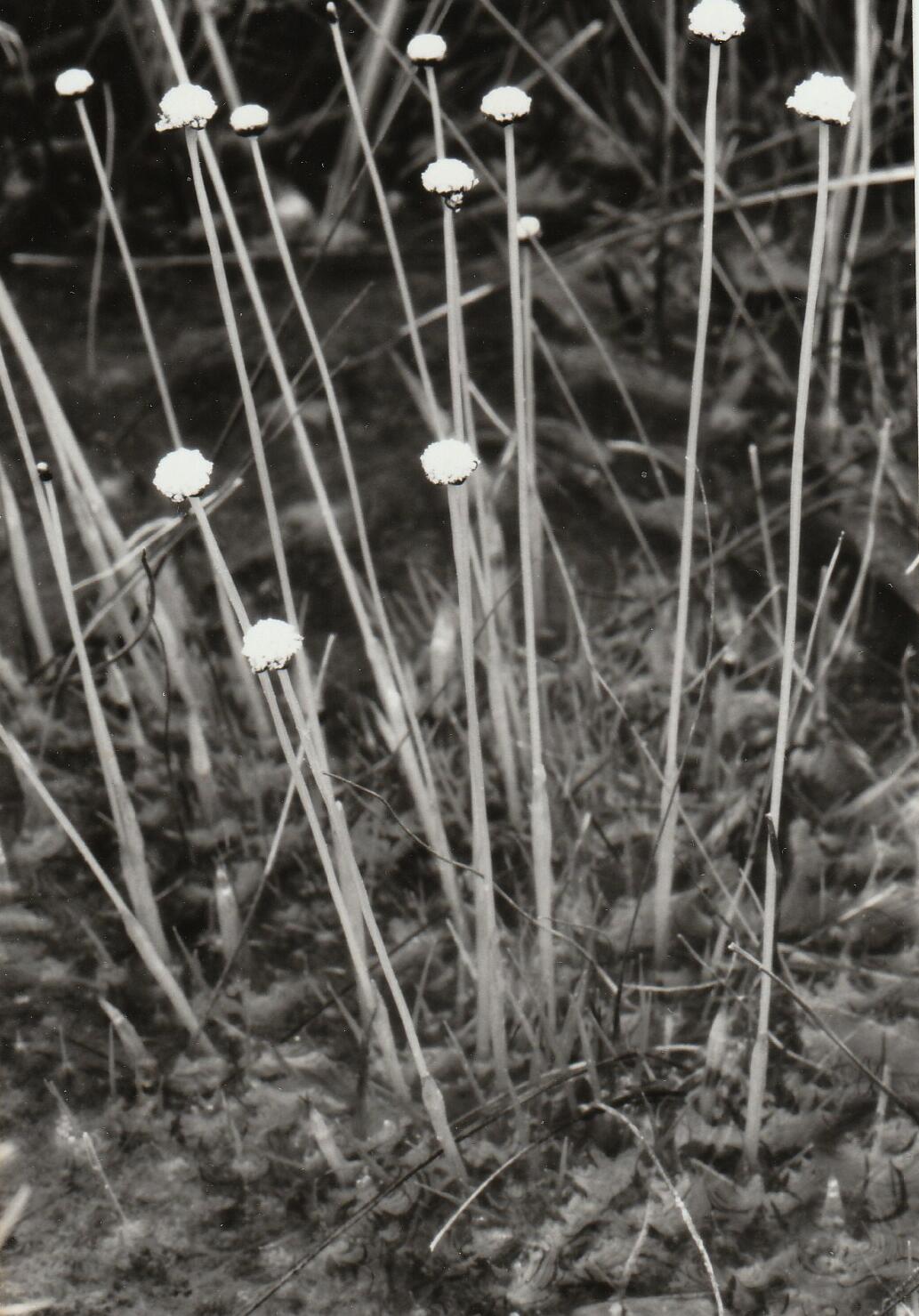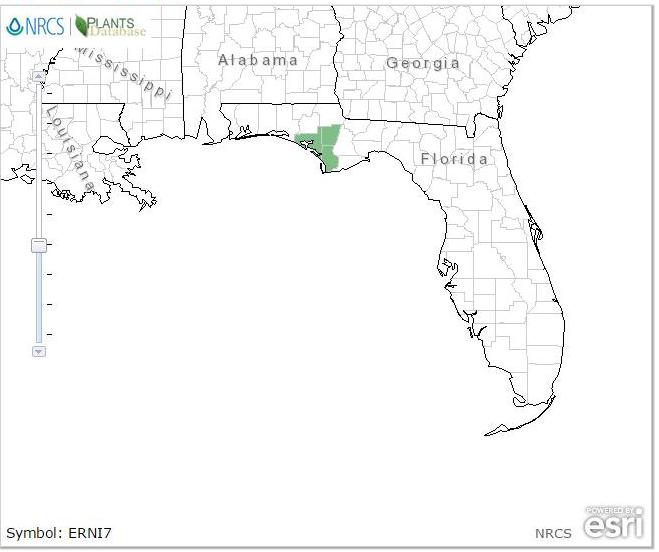Eriocaulon nigrobracteatum
| Eriocaulon nigrobracteatum | |
|---|---|

| |
| Eriocaulon nigrobracteatum, photo in natural habitat by John Palis | |
| Scientific classification | |
| Kingdom: | Plantae |
| Division: | Magnoliophyta - Flowering plants |
| Class: | Liliopsida - Monocotyledons |
| Order: | Eriocaulales |
| Family: | Eriocaulaceae |
| Genus: | Eriocaulon |
| Species: | E. nigrobracteatum |
| Binomial name | |
| Eriocaulon nigrobracteatum E. L. Bridges & Orzell | |

| |
| Natural range of Eriocaulon nigrobracteatum from USDA NRCS Plants Database. | |
Contents
Description
Perennial, forming large dense clumps by basal offshoots. Leaves in a basal rosette, whitish below, dark green above, linear-attenuate, 0.5-1.5(-4.0) cm long, 0.3-1.0 mm wide, irregularly and incompletely septate, tapering evenly from a pale, aerenchymatous base. Sheath of scape much longer than the leaves, 1.5-2.0(-4.9) cm long, the orifice loose, oblique, hyaline, bifid. Mature scape delicately filiform, light green, 5-15(-19) cm long, 0.2-0.3 mm broad, strongly twisted, mostly 4 ridged. Mature heads hemispherical, sometimes globose when pressed, 3.0-4.0(-5.0) mm broad, dark gray to black below due to the exposed involucral bracts, white above due to the densely white-hairy tips of the perianth parts and bractlets. Surface of the receptacle smooth. Outer involucral bracts broadly ovate to orbicular, 1.0-1.3 mm long, 0.9-1.2 mm wide, smooth, dark gray to black, the tips rounded, entire. Receptacular bractlets about 1.0 mm long, broadly ovate, uniformly dark gray or slightly lighter yellowish or whitish at base, the apex densely white clavate hairy on the back and margin. Male flower: sepals gray- translucent, oblong, ca. 1.2 mm long, concave-curvate, obscurely keeled, the apex rounded, the outer apex and upper margin densely white clavate hairy. Petals subequad, pale, largely found in a narrowly cylindrical structure about 1.1 mm long, acute, the inner surface around the glands and the margins of the petal lobes with white clavate hairs. Anthers black, broadly ellipsoid, ca. 0.2 mm long, very slightly exserted or not exerted from the head on short white filaments. Female flower: sepals oblong, slightly curvate-keeled, ca. 1.0 mm long, gray- translucent, white clavate on the back and upper margin. Petals oblong, ca. 1.0 mm long, obtuse, the upper inner surfaces and upper margins white clavate hairy, the inner surface also densely hairy with long, clear, multiceUiilar trichomes, capsule light brown, bicarpeUate, 0.6-0.7 mm wide, ca. 0.3 mm high, seeds orbicular, ca. 0.3 mm long, very obscurely reticulate.
Distribution
Eriocaulon nigrobracteatum is a narrow endemic which at the time of its description as a new species in 1993 was known from eleven sites in eastern Bay (6), and adjacent western Calhoun (2) and northwestern Gulf (3) counties, an area encompassing approximately 689 km^ (265 sq mi) in the east-central Florida panhandle. The currently known sites are within an area bounded on the east by the lower Chipola River and lower Apalachicola River valleys, extending westward to Bear Creek and its tributaries which discharge to Econfina Creek in north-central Bay County. All eleven sites are within the Gulf Coastal Lowlands physiographic region (see Brooks 1981; Puri & Vernon 1964), with seven occurring along major south flowing drainages and their tributaries (Sandy and Wetappo Creeks). Four sites occur on the southern portion of the Fountain Slope, the northernmost extension of the Gulf Coastal Lowlands.